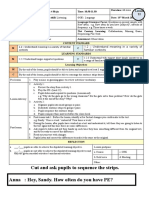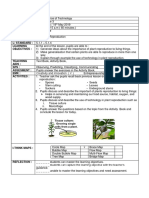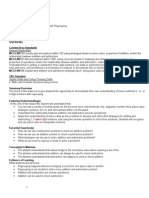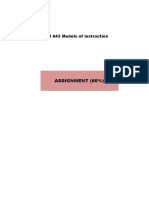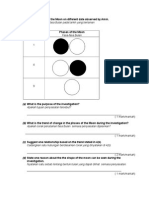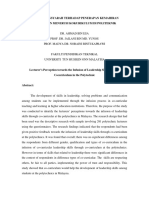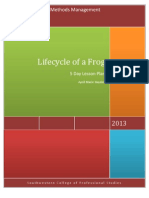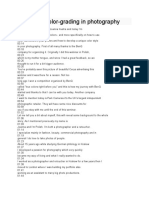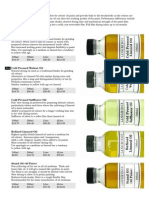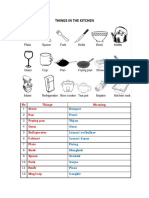0 ratings0% found this document useful (0 votes)
235 viewsAnimal and Plant Unit
Animal and Plant Unit
Uploaded by
api-252935769Copyright:
© All Rights Reserved
Available Formats
Download as DOCX, PDF, TXT or read online from Scribd
Animal and Plant Unit
Animal and Plant Unit
Uploaded by
api-2529357690 ratings0% found this document useful (0 votes)
235 views8 pagesOriginal Title
animal and plant unit
Copyright
© © All Rights Reserved
Available Formats
DOCX, PDF, TXT or read online from Scribd
Share this document
Did you find this document useful?
Is this content inappropriate?
Copyright:
© All Rights Reserved
Available Formats
Download as DOCX, PDF, TXT or read online from Scribd
Download as docx, pdf, or txt
0 ratings0% found this document useful (0 votes)
235 views8 pagesAnimal and Plant Unit
Animal and Plant Unit
Uploaded by
api-252935769Copyright:
© All Rights Reserved
Available Formats
Download as DOCX, PDF, TXT or read online from Scribd
Download as docx, pdf, or txt
You are on page 1of 8
Unit Title: Plants and Animals
Grade: Second Grade
Summary: Students will participate in a 15/16-day unit to learn many facets of animal and plant survival. Students will learn about what it takes for
animals and plants to survive, the life cycles animals and plants go through, the importance of animal conservation preserving animal habitats.
Students will use strategies such as creative problem solving, mystery, and compare and contrast to investigate these topics.
Author: Bree Bosse: 2013-2014
Unit Big Idea:
Animal and Plant Survival
Life Cycles of plants and animals
Animal Conservation and habitat conservation
Essential Question:
1. What are living things and what do they need to survive? What do plants need to survive? What do animals need to survive?
2. What is a life cycle? How does a living thing go through a life cycle?
3. How can human behaviors impact an animal habitat?
4. What is animal endangerment?
Assessments:
Diagnostic:
KWL
Informal class discussions to access prior
knowledge
Word Splashes
Formative/Ongoing:
Plant and Butterfly observation journal
KWL
Synthesis Activity in Mystery Lesson:
Report to Environmental Protection
Agency w/ diagram and product
Wraparound discussion in Mystery
Lesson (informal observation)
Synthesis Activity in Compare and
Contrast Lesson: Choice Board products
Summarizing Activity in CC Lesson:
TOTD
CPS Guided Imagery Reflection
Summarizing Activity for CPS Lesson:
Shapely Debrief reflection
ALL handouts from students will serve as
an ongoing/informal assessment of
student progress and understanding
Anecdotal notes on student conversation
Summative:
Synthesis Activity in Creative Problem
Solving Lesson: Letter to Governor
(assessed with rubric and checklist for
students)
Performance Task with Rubric
Post-Assessment
Resources:
All Lessons:
Books:
Why Do Leaves Change Color? By Betsy Maestro
A Tree Is A Plant by Clyde Robert Bulla
From Seed to Plant by Gail Gibbons
What is a Food Chain? By Bobbie Kalman
Butterfly Garden by Margaret McNamara
Where Butterflies Grow by Joanne Ryder
A Butterfly is Patient by Dianna Hutts Aston and Sylvia Long
Egg to Chicken by Camilla de la Beoyere
Tadpole to Frog by Camilla de la Beoyere
National Geographic Kids: Caterpillar to Butterfly by Laura Marsh
National Geographic Kids: Seed to Plant by Kristin Baird Rattini
National Geographic Kids: Frogs! By Elizabeth Carney
Plant Secrets by Emily Goodman
City Green by DyAnne DiSalvo-Ryan
The Seeds of the Milkweed Written and Illustrated by the Second Grade Students of East End Elementary in Little Rock, Arkansas
The Magic School Bus: Plants Seeds-A Book About How Living Things Grow
Come Back, Salmon by Molly Cone
--Variety of Magic School Bus Books
--Student Science Textbook and workbooks
Leveled Harcourt Readers:
Below Level: Life Cycles
On Level: Changing Shapes
Above Level: What are Some Life Cycles?
Science Vocabulary Readers:
-Sunflower Life Cycle
-Chick Life Cycle
-Frog Life Cycle
-Horse Life Cycle
-Butterfly Life Cycle
-Ladybug Life Cycle
Technology:
Videos from Discovery Education:
-The Magic School Bus: Goes to Seed
-The Magic School Bus: Hops Home
-Magic School Bus: Cracks a Yolk
-The Magic School Bus: Gets Planted
-The Magic School Bus: Butterfly and the Bog Beast
-TLC Elementary School: Our Natural World
-Animal Life Cycles
-Living and Nonliving Things
The Discovery Ed video segments on Life Cycles http://player.discoveryeducation.com/index.cfm?guidAssetId=74AE57B9-C6B7-495F-A6DB-
A2ED3829BDB7&blnFromSearch=1&productcode=DSCE
(Introduction, amphibians, mammals, birds, reptiles, fish, & insects)
Other websites:
-ChickscopeSee how a chicken develops in the egg and what is happening each day of the 21-day period-- How does an egg develop from the time it is
laid to the time it hatches? Come explore with us the fascinating 21-day life cycle of the embryological chick.-
http://chickscope.beckman.uiuc.edu/explore/embryology/
-Shows a real chick being hatched from an egghttp://www.msichicago.org/exhibit/genetics/chicks_movie.html
- www.wwf.org to explore animal conservation
-Various zoo websites to explore ways zoos help inform the public about the importance of protecting animals and their habitats-- www.sandiegozoo.com (has live
cams of animals), www.zooatlanta.com
-www.defenders.org
-www.animalexplorers.com
Brainpop Jr.:
Freshwater habitats (optional)
Plant Life Cycle
Butterfly Life Cycle
Frog Life Cycle
Extinct and Endangered Species
Manipulatives/Equipment/etc.:
Handouts from ALL lessons (included on modeled lesson)
iPevo Interactive board
Computers
iPads (various apps for products)
projector to watch videos
Letter writing paper
Materials for students final products
Chocolate Chip cookies
Chart paper and markers
Magnifying glasses and additional tools to motivate and increase students interest
Initial clues
o Before Picture: color photo copy of page 9 from Come Back, Salmon
o After Picture: color photo copy of pages 41 and 42
Cold Case Files with cut out clue cards for each group (differentiate for groups)Make it seem like a real briefcase (primary source type of documents)
Standards to address in Unit:
Content Area Standards
Second Grade
Science:
S2CS6b. Science involves collecting data and testing hypotheses
S2E3a. Recognize effects that occur in a specific area caused by weather, plants, animals, and/or people.
S2L1. Students will investigate the life cycles of different living organisms.
a. Determine the sequence of the life cycle of common animals in your area: a mammal such as a cat or dog or classroom pet, a bird such as a chicken, an
amphibian such as a frog, and an insect such as a butterfly.
c. Investigate the life cycle of a plant from a seed and by recording changes over a period of time.
d. Identify fungi (mushrooms) as living organisms.
S2CS1. Students will be aware of the importance of curiosity, honesty, openness, and skepticism in science and will exhibit these traits in their own efforts to
understand how the world works.
a. Raise questions about the world around them and be willing to seek answers to some of the questions by making careful observations and measurements
and trying to figure things out.
ELA/Writing Content:
ELACC2W1: Write opinion pieces in which they introduce the topic or book they are writing about, state an opinion, supply reasons that support the
opinion, use linking words (e.g., because, and, also) to connect opinion and reasons, and provide a concluding statement or section.
Third Grade Science:
S3L1d. Explain what will happen to an organism if the habitat is changed
S3L2a. Explain the effects of pollution (such as littering) to the habitats of plants and animals.
First Grade Science:
S1L1. Students will investigate the characteristics and basic needs of plants and animals.
TAG Objectives:
Higher Order and Critical Thinking Skills
2. The student responds to questions with supporting information that reflects in-depth knowledge on a topic.
3. The student conducts comparisons using criteria.
4. The student makes and evaluates decision using criteria.
11. The student draws based upon relevant information while disregarding irrelevant information.
14. The student identifies and illustrates basic principles and the foundational concepts that are central to understanding the essence of a field of study.
Advanced Communication Skills
1. The student uses written, spoken, and technological media to convey new learning or challenge existing ideas.
2. The student produces written and/or oral work that is complex, purposeful, and organized, includes relevant supporting examples and manipulation of language.
3. The student creates products and/or presentations that synthesize information from diverse sources and communicate expertise to a variety of authentic audiences.
7. The student responds to contributions of others, considering all available information.
8. The student participates in small group discussions to argue persuasively or reinforce others good points.
10. The student supports and defends his/her own opinions while respecting the opinions of others
Advanced Research Skills
1. The student uses a variety of print and non-print resources to investigate a topic of interest.
5. The student gathers, organizes, analyzes, and synthesizes data from multiple sources to support or disprove a hypothesis.
6. The student develops and uses systematic procedures for recording and organizing information.
7. The student evaluates research methodologies and data to detect validity, bias, reliability, and applicability to real-world problems and/or solutions.
8. The student allows for and accepts alternative interpretations of data.
10. The student defends research findings in a presentation or exhibit.
Creative Thinking and Problem Solving
2. The student designs, applies, evaluates, and adapts a variety of innovative strategies to when problem solving (e.g., recognizes problems, defines problems,
identifies possible solutions, selects optimal solution, implements solution, and evaluates solution).
3. The student incorporates brainstorming and other idea-generating techniques (synectics, SCAMPER, etc.) to solve problems or create new products.
4. The student demonstrates skills in fluency and flexibility to solve problems or create new products.
5. The student develops original ideas, presentations, or products through synthesis and evaluation.
6. The student, independently or through collaboration with classmates, clarifies, illustrates, or elaborates on an idea for product improvement.
9. The student recognizes and assumes risks as a necessary part of problem solving.
10. The student monitors and reflects on the creative process of problem solving for future applications.
Know:
Organisms/plants may not survive if their
habitat is changed.
Pollution occurs when the environment is
contaminated with harmful substances.
Human behaviors such as littering, driving,
industry, and development impact the
environment.
Plants need specific things for survival and
know what these things are
Animals need specific things for survival and
know what these things are.
Some animals are endangered
Animals go through developmental changes
from conception, through adult, to death.
The developmental changes are called life
cycles.
Most common animals start their life cycles
from fertilized eggs.
The eggs develop to the young forms of the
animal which later develop into adult forms.
Common animals such as cats, birds, frogs,
and butterfly undergo these life cycle
changes.
Most plants develop from seeds (which are
like the fertilized eggs of animals).
Seeds germinate, grow and develop to
become mature plants.
The matured plants produce flowers from
Understand:
Every living thing thrives in habitats suited
for its needs.
What you do has an impact on your
environment.
The relationship between the health of a river
as a whole and health of the living creatures
in it.
The role that humans play on keeping our
environment clean.
The role habitats play in plant and animal
survival
The role that food chains play in plant and
animal survival
The rules of brainstorming
That people are largely responsible for the
endangerment of animals
The importance of protecting animals and
preserving their habitats
All animals undergo certain changes as they
develop through their life cycles.
All plants undergo certain changes as they
develop from seed to maturity.
Do:
Identify forms of pollution.
Describe how pollution affects the environment
and the plants and animals that live in it.
Describe ways to protect the environment.
Supports and defends his/her opinions while
respecting the opinions of others.
Gather, organize, analyze, and synthesize data
from multiple sources to support or disprove a
hypothesis.
Discuss information in a group and work
together to draw conclusions based upon
relevant information while discarding
irrelevant information.
Teach others about a topic they have studies
Be able to compare and contrast different
topics
Participate in a creative problem solving
activity
Design, apply, evaluate, and adapt a variety of
innovative strategies to when problem
solving (e.g., recognizes problems, defines
problems, identifies possible solutions,
selects optimal solution, implements
solution, and evaluates solution).
Incorporate brainstorming and other idea-
generating techniques (synectics, SCAMPER,
etc.) to solve problems or create new products
Observe and describe the life cycle of a common
which seeds are developed.
The seed produced by flowers can again
germinate to repeat the cycle of the plant.
favorite pet.
Observe and describe the life cycle of a
butterfly.
Draw and label the sequence of the life cycle
of the chosen pet.
Grow a plan (a grass, a pea, kidney ban, etc.)
from seed to maturity.
Observe, record and describe the changes
seen at each stage of the growth and
development of the plant from a seed to a
matured plant.
Draw and label the observed changes from
seed to a matured plant.
Major Unit concepts, vocabulary and artifacts:
Vocabulary:
Lesson One: plants, animals, survival, living, nonliving, life cycle
Lesson Two: Plant, Seed, Roots, Stem, Flower, Fruit, Germinate/sprout
Lesson Three: Pupa/chrysalis, Larva/caterpillar, Adult/Butterfly, Amphibian, Egg, Tadpole, Adult (Frog)
Lesson Four: Pollution, habitat, river, salmon, life cycle, detective/mystery/evidence/hypothesis
Lesson Five: Poaching, personal gratification, personal gain, exotic, encroaching, development, extinct, endangered
Lesson Six: Performance Task
**Lesson One: Plant and
Animal Survival (Compare
and Contrast) (2 days)
Essential Questions:
What are living things and
what do they need to
survive?
What do plants need to
survive?
What do animals need to
survive?
Lesson Two: Plant Life
Cycle (2 days)
Essential Questions:
What is a life cycle?
How does a living thing go
through a life cycle?
How do seeds become
adult plants?
Lesson Three: Animal Life
Cycles (3 days)
Essential Questions:
How Does a living thing go
through a life cycle?
Why are the early stages of
a frog or butterfly not like
the adults?
How are a plant and
animal life cycle the same?
Different?
**Lesson Four: Human
Impact on Rivers and
Animal Habitats (Mystery)
(3 days)
Essential Questions:
How can human behaviors
impact an animal habitat?
How can human behaviors
harm rivers and other
bodies of water?
Why is it important to have
clean rivers?
What can people do to help
maintain clean rivers?
**Lesson Five: Animal
Endangerment (CPS) (3
days)
Essential Question:
What is animal
endangerment?
Do people have the right to
kill animals for sport,
recreation, personal
gratification or personal
gain?
How can we help solve the
problem of animal
endangerment?
Artifact & Evidence:
(See Model Lesson #1 for more
detail- this lesson will take
approximately 2 science blocks
to complete)
-Introduce Unit & performance
task
-Discuss nonliving vs. living
things
-KWL on plants and animal
- Compare and Contrast
Lesson on Plant and Animal
Survival (will go into Day 2)
-Add to KWL
Artifact & Evidence:
Day One:
- Review what plants need to
survive
-Discuss parts of a plant & how
they come from a seed (watch
Brainpop Jr. Parts of a Plant)
-SW begin to germinate seeds
-SW begin their plant
observation journal (will
continue to observe for entire
unit)
-TOTD
Day 2:
-Hook: Brainpop video on
Plant Life Cycle and/or book
on plant life cycles
-SW complete a diagram the
plant life cycle
-SW observe their seeds & see
the roots start to pop out of the
seeds and discuss the
vocabulary words
-Add to KWL
Artifact & Evidence:
Day One: Butterfly Life Cycle
-KWL or Word Splash to
access background knowledge
on butterflies
-Watch video on butterflies
-Introduce LIVE caterpillars in
classroom
-Discuss journals for butterfly
observations
-SW begin journaling (will
continue throughout entire
unit)
-Add to KWL
Day Two: Frog Life Cycle
-KWL on Frogs
-Watch brainpop or discovery
education
-Create a diagram
-reading passage with comp.
questions
-revisit KWL
Day Three: Bird and Life
Cycle
-Discuss Life cycles in general
and discuss similarities
-Use Eggscopic website to
observe chick developing in the
egg over the 21-day period
-Read a book or watch a quick
video
-Compare the life cycles of all
animals and plantsfrogs and
butterflies are very different as
young than they are as adults
what about birds? Mammals?
-TOTD
Artifact & Evidence:
(See Model Lesson #2 for more
detail- this lesson will take
approximately 3 science blocks
to complete)
-Hook
-Mystery Lesson
-Synthesis activity- SW write a
report, draw a diagram, and
create a product
-SW present their product to
the class
-Summarizing activity
Wraparounds discussion
Artifact & Evidence:
(See Model Lesson #3 for more
detail- this lesson will take
approximately 3 science blocks
to complete)
-Guided imagery activity
-Guided imagery reflection
-Discuss Rules of
Brainstorming
-CPS Lesson
-Synthesis activity: Letter
writing
-Summarizing activity
Shapely Debrief reflection
Lesson Six:
Performance Assessment
(two-three days)
Come onride on the MAGIC
SCHOOL BUS
Students should show evidence
of understanding that all living
organisms go through a life
cycle and be able to show and
explain each part of a
particular organisms life cycle.
Artifact & Evidence:
-Teacher will explain
performance task to students
ensuring that they understand
the task.
-SW use everything they have
learned this unit and use
information gathered through
research, plant journal,
butterfly journal, activities,
handouts, reading passages,
textbook, videos, anchor texts,
etc. to to sell a life cycle trip
on Ms. Bosses MAGIC
SCHOOL BUS, explaining each
stop that your traveler will
experience along the way.
-SW produce a product for
teacher to evaluate
-SW present product
-Grade with rubric
-After students finish
Performance task, they will
take post-test for the unit.
You might also like
- Teaching Primary Science Constructively: Download P4.1 - 1.0a 'Discussion of Constructivism'Document25 pagesTeaching Primary Science Constructively: Download P4.1 - 1.0a 'Discussion of Constructivism'renuka_theranNo ratings yet
- WMO Lecture Notes For Class IV Meteorological PersonnelDocument165 pagesWMO Lecture Notes For Class IV Meteorological PersonnelLuke HNo ratings yet
- Cut and Ask Pupils To Sequence The Strips. Anna: Hey, Sandy. How Often Do You Have PE?Document3 pagesCut and Ask Pupils To Sequence The Strips. Anna: Hey, Sandy. How Often Do You Have PE?AzimmahNo ratings yet
- PMC 515 Education and DevelopmentDocument22 pagesPMC 515 Education and DevelopmentShalini RamNo ratings yet
- RPH Science Y3 5.0 Plants ReproductionDocument1 pageRPH Science Y3 5.0 Plants ReproductionMEIKO BEARNo ratings yet
- How The World Works-FinishedupDocument4 pagesHow The World Works-Finishedupapi-147600993100% (1)
- Ciss PresentationDocument25 pagesCiss Presentationapi-252935769No ratings yet
- Graduated Difficulty Lesson - BosseDocument3 pagesGraduated Difficulty Lesson - Bosseapi-252935769No ratings yet
- MR & Ms Queen Palace Bikini Open 2019Document27 pagesMR & Ms Queen Palace Bikini Open 2019Dane MorrisNo ratings yet
- Year 2 Living Things Unit Term 1Document6 pagesYear 2 Living Things Unit Term 1api-277245562No ratings yet
- Non-Technical Presentation (Shaw)Document8 pagesNon-Technical Presentation (Shaw)Shaira OfiangaNo ratings yet
- Logic, Reasoning and Critical Thinking: Maximum Marks: 10 Date: 14/11/2021Document2 pagesLogic, Reasoning and Critical Thinking: Maximum Marks: 10 Date: 14/11/2021Umer AlamNo ratings yet
- Daily Lesson Plan - Science Year 6 (SDP)Document10 pagesDaily Lesson Plan - Science Year 6 (SDP)hellowuNo ratings yet
- Sufism by Abdullah KhalidDocument2 pagesSufism by Abdullah KhalidabdullahNo ratings yet
- Secularism in EducationDocument14 pagesSecularism in Educationbudisatriadi100% (2)
- Makmal MayaDocument11 pagesMakmal MayaAnonymous xQiRAeYNo ratings yet
- Assignment HPGD2303 - Specific InstructionDocument15 pagesAssignment HPGD2303 - Specific InstructionmuhammaducukNo ratings yet
- Assignment (60%) : EMI 643 Models of InstructionDocument6 pagesAssignment (60%) : EMI 643 Models of Instructionyuki_naNo ratings yet
- Models and Strategies For Teaching: HMEF5123Document32 pagesModels and Strategies For Teaching: HMEF5123Norihan Kamal100% (1)
- Malay Traditional House WorksheetDocument1 pageMalay Traditional House WorksheetNako Abdullah100% (1)
- Assignment (60%) : EEP212 Educational PsychologyDocument7 pagesAssignment (60%) : EEP212 Educational PsychologyNUR HABIBAH BT YUSUFNo ratings yet
- Unit 5 - in My HouseDocument21 pagesUnit 5 - in My HouseNaqiuddin HashimNo ratings yet
- EMI643 MODELS of InstructionDocument7 pagesEMI643 MODELS of Instructionyasini0% (1)
- Jsu PM Ting 1Document11 pagesJsu PM Ting 1CherriesNo ratings yet
- The Bool Is Red.: Correct The Sentences With Capital LettersDocument4 pagesThe Bool Is Red.: Correct The Sentences With Capital LettersNurul Fazwani Solehah100% (1)
- RPT SC Form 1Document22 pagesRPT SC Form 1Norhidayah Binti PazilNo ratings yet
- 319 Semantic ExmDocument4 pages319 Semantic ExmAimi Syazwani Ramlee100% (1)
- BI Y3 LP TS25 MODULE 10 (LP145-160) TDocument20 pagesBI Y3 LP TS25 MODULE 10 (LP145-160) TTracey Lyeonna AkiamNo ratings yet
- Unit 5 Blended Learning Lesson PlanDocument4 pagesUnit 5 Blended Learning Lesson Planapi-457866839No ratings yet
- Taksonomi Solo and BloomDocument104 pagesTaksonomi Solo and BloomJoyce ChuaNo ratings yet
- Instructional MediaDocument26 pagesInstructional MediaPirate KingNo ratings yet
- Soalan Fasa BulanDocument4 pagesSoalan Fasa Bulanharraz100% (1)
- Proforma - gc6213 Teori Sem 1 2016 17Document6 pagesProforma - gc6213 Teori Sem 1 2016 17alfa xoxNo ratings yet
- Bahasa Inggeris Tahun 2Document39 pagesBahasa Inggeris Tahun 2Asraf Hadzwan100% (1)
- Item Analysis For English Form 3Document8 pagesItem Analysis For English Form 3Imelda BillyNo ratings yet
- RPH MikroorganismaDocument8 pagesRPH MikroorganismaNur Akmal HassanNo ratings yet
- RPH PlantsDocument10 pagesRPH PlantsMOHD HASRUL ASRAF BIN OTHMAN MoeNo ratings yet
- Why Do Students Misbehave in SchoolDocument5 pagesWhy Do Students Misbehave in Schoolapi-355889713No ratings yet
- LESSON - PLAN - 62 Close Up Unit 7 Time To SpareDocument29 pagesLESSON - PLAN - 62 Close Up Unit 7 Time To SpareWONG LAI LENG MoeNo ratings yet
- Kemahiran KepimpinanDocument20 pagesKemahiran Kepimpinannurhayati8860No ratings yet
- PT3 ENGLISH Examination FormatDocument89 pagesPT3 ENGLISH Examination FormatSerra DeanNo ratings yet
- Writing A Research Proposal PDFDocument73 pagesWriting A Research Proposal PDFFaie SollehNo ratings yet
- Mathematics DLP Year 1: 3. Today Is Friday. Yesterday Is?Document2 pagesMathematics DLP Year 1: 3. Today Is Friday. Yesterday Is?Mohd Norazmie Mohd ZainNo ratings yet
- Questions: 1. MR - Igat Works in A School. Answer: He Is A TeacherDocument2 pagesQuestions: 1. MR - Igat Works in A School. Answer: He Is A Teacherphan_azperaNo ratings yet
- RPH 11 JanDocument8 pagesRPH 11 JanNurulNo ratings yet
- Assessment 1 - Why Do Children MisbehaveDocument14 pagesAssessment 1 - Why Do Children Misbehaveapi-333990095No ratings yet
- Form 1 English Lesson PlanDocument2 pagesForm 1 English Lesson PlanFaith Francetta Lasimbang OtigilNo ratings yet
- 25 Peta Ithink FB Koleksibbm PDFDocument24 pages25 Peta Ithink FB Koleksibbm PDFSyakilla Taib100% (1)
- Continental Drift and PlateDocument10 pagesContinental Drift and Platejenazze cruzNo ratings yet
- Sosiology AssignmentDocument4 pagesSosiology AssignmentCatherine KiuNo ratings yet
- Math Form 1 Paper 2Document10 pagesMath Form 1 Paper 2Han Siang KuNo ratings yet
- Edu480 OverallDocument47 pagesEdu480 OverallNur Arina DayanaNo ratings yet
- RPH YEAR 5 SJKDocument5 pagesRPH YEAR 5 SJKPriyaDhaarshini100% (2)
- Punctuate CorrectlyDocument1 pagePunctuate CorrectlyTeh Ban LengNo ratings yet
- Modul 3 PDPR (Pengajaran Dan Pembelajaran Di Rumah)Document14 pagesModul 3 PDPR (Pengajaran Dan Pembelajaran Di Rumah)Teeqa SyiedaNo ratings yet
- Rekod Pembelajaran Murid (PBD) Sains Tahun 3Document7 pagesRekod Pembelajaran Murid (PBD) Sains Tahun 3Supu LachimyNo ratings yet
- SC DLP Y5 TS25 (Unit 5)Document19 pagesSC DLP Y5 TS25 (Unit 5)farisNo ratings yet
- Year 1 TransitionDocument13 pagesYear 1 TransitionIntan Nur MariniNo ratings yet
- RPH BI THN 6 NEW - Unit 1 (LP 6-16)Document11 pagesRPH BI THN 6 NEW - Unit 1 (LP 6-16)Siti Zulaikha SareeNo ratings yet
- Micro Teaching RPHDocument4 pagesMicro Teaching RPHNur FarhanaNo ratings yet
- Ungs 1301 - Book ReviewDocument9 pagesUngs 1301 - Book ReviewAmmarz HaziqNo ratings yet
- E-Rph (27 April 2018) - Sains KSSM f2Document2 pagesE-Rph (27 April 2018) - Sains KSSM f2Grace Daphne SimonNo ratings yet
- Sierra Nevada College Lesson PlanDocument6 pagesSierra Nevada College Lesson Planapi-266778770No ratings yet
- Frog Lesson Plan Integrated Science-Writing-5 Day Plans - 1st GradeDocument30 pagesFrog Lesson Plan Integrated Science-Writing-5 Day Plans - 1st Gradeapi-212862162No ratings yet
- New Doc 6 2Document6 pagesNew Doc 6 2api-252935769No ratings yet
- New Doc 7Document2 pagesNew Doc 7api-252935769No ratings yet
- New Doc 5Document4 pagesNew Doc 5api-252935769No ratings yet
- Mentor Observation FormDocument3 pagesMentor Observation Formapi-252935769No ratings yet
- Detective Apps-1Document7 pagesDetective Apps-1api-252935769No ratings yet
- Rubric BosseDocument1 pageRubric Bosseapi-252935769No ratings yet
- Tag Parent Info Session 2013Document24 pagesTag Parent Info Session 2013api-252935769No ratings yet
- Creative Problem Solving LessonDocument4 pagesCreative Problem Solving Lessonapi-252935769No ratings yet
- Classroom Observation 3-27Document1 pageClassroom Observation 3-27api-252935769No ratings yet
- Creative Problem Solving HandoutsDocument16 pagesCreative Problem Solving Handoutsapi-252935769No ratings yet
- Decision Making Lesson - BosseDocument4 pagesDecision Making Lesson - Bosseapi-252935769No ratings yet
- Circle of Knowledge Lesson-BosseDocument3 pagesCircle of Knowledge Lesson-Bosseapi-252935769No ratings yet
- Pgdca 1 Sem Office Automation and Tally 317 Dec 2018Document2 pagesPgdca 1 Sem Office Automation and Tally 317 Dec 2018datatech1020No ratings yet
- Secrets of Color Grading in PhotographyDocument41 pagesSecrets of Color Grading in PhotographyShivaRanjanMoonHunterNo ratings yet
- Sewage Lift Station DesignDocument47 pagesSewage Lift Station DesignMussa ElbarraniNo ratings yet
- Sabp P 063Document17 pagesSabp P 063mohamed salahNo ratings yet
- Boil Off Gas QatarDocument4 pagesBoil Off Gas Qatarrvkumar61No ratings yet
- SOUND (IMPORTANT NUMERICALS)_CLASS IXDocument6 pagesSOUND (IMPORTANT NUMERICALS)_CLASS IXmosaicmirth6.9No ratings yet
- Chapter 3. Wells and Well Hydraulics (HWRE 6034)Document110 pagesChapter 3. Wells and Well Hydraulics (HWRE 6034)Saqalain HaiderNo ratings yet
- BE Sem-2 Unit 1 Introduction To Business EnvironmentDocument23 pagesBE Sem-2 Unit 1 Introduction To Business EnvironmentAmbarish VaghelaNo ratings yet
- 3rd Exam 3LDocument4 pages3rd Exam 3LJocelyn CorpuzNo ratings yet
- Langridge Oil Mediums RRPDocument5 pagesLangridge Oil Mediums RRPstlukeartNo ratings yet
- Natural Gas in IraqDocument16 pagesNatural Gas in Iraqياسين رياض بندر A-44No ratings yet
- A Book of English IdiomsDocument419 pagesA Book of English IdiomsSrinivas VamsiNo ratings yet
- Grade 6 DLP Q3 W4D3Document10 pagesGrade 6 DLP Q3 W4D3cristineann.arandiaNo ratings yet
- Types of MapsDocument23 pagesTypes of MapscyNo ratings yet
- C Rei Vulner 1 PDFDocument114 pagesC Rei Vulner 1 PDFdanmero11No ratings yet
- Scale 1495: "Messiaen Mode 6": I I I IDocument1 pageScale 1495: "Messiaen Mode 6": I I I IIan RingNo ratings yet
- MudrasDocument6 pagesMudrasmithungnNo ratings yet
- MSDS Yeser® EDTA 2na Rev.Document8 pagesMSDS Yeser® EDTA 2na Rev.Adiba Naura ShakilaNo ratings yet
- Ong Drowll Down Ye The NiceDocument16 pagesOng Drowll Down Ye The NiceStarzyNo ratings yet
- Things in The KitchenDocument4 pagesThings in The KitchenElin EdginaNo ratings yet
- B1. Module 2 - Intellectual RevolutionsDocument8 pagesB1. Module 2 - Intellectual RevolutionsTimeeh TurnerNo ratings yet
- XI-English Annual 2021Document14 pagesXI-English Annual 2021mrityunjayNo ratings yet
- NEFTier3 Series P2D32N003E 02.07Document580 pagesNEFTier3 Series P2D32N003E 02.07Julio Felipe Miranda Marzan100% (3)
- About Carolyn Hamlett - A Short Bio - Carolyn Hamlett - Exposing Lucifer's Plan in The Last DaysDocument5 pagesAbout Carolyn Hamlett - A Short Bio - Carolyn Hamlett - Exposing Lucifer's Plan in The Last DaysfyoutashNo ratings yet
- Visvesvaraya Technological University Belagavi, KarnatakaDocument14 pagesVisvesvaraya Technological University Belagavi, KarnatakaZakiya SultanaNo ratings yet
- Drug Name Action Dose & Route Side Effects Nursing Care Brand Name: Twynsta Generic: Telmisartan + AmlodipineDocument4 pagesDrug Name Action Dose & Route Side Effects Nursing Care Brand Name: Twynsta Generic: Telmisartan + AmlodipineEileenAquinoMacapagalNo ratings yet
- Dynamic Spectrum Sharing and Multi RAT SS ORANDocument3 pagesDynamic Spectrum Sharing and Multi RAT SS ORANgoddfldkfddfvdfmvfglNo ratings yet
- Wsat-Xee: Installation Use and Maintenance ManualDocument68 pagesWsat-Xee: Installation Use and Maintenance ManualAncuta CosmanNo ratings yet


